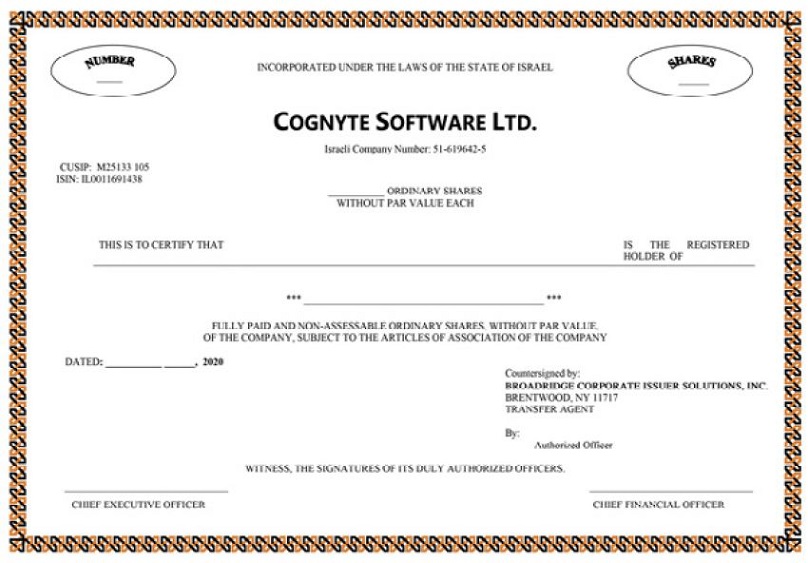27.2.25 “Retirement” shall mean a Grantee’s retirement
pursuant to Applicable Law or in accordance with the terms of any tax-qualified retirement plan maintained by the Company or any of its Affiliates in which the Grantee participates or is subject to.
27.2.26 “Securities Act” shall mean the U.S. Securities Act of 1933, and the rules and regulations promulgated
thereunder, all as amended from time to time.
27.2.27 “Service Provider” shall mean an Employee,
director, officer, consultant, advisor and any other person or entity who provides services to the Company or any Parent, Subsidiary or Affiliate thereof. Service Providers shall include prospective Service Providers to whom Awards are granted in
connection with written offers of an employment or other service relationship with the Company or any Parent, Subsidiary or any Affiliates thereof, provided, however, that any such grant shall not become effective until such employment
or service shall have actually commenced.
27.2.28 “Shares” shall mean Ordinary Shares, with no par value,
of the Company (as adjusted for stock splits, reverse stock splits, distribution of bonus shares with respect thereto, combinations or other recapitalization events), or shares of such other class of the Company as shall be designated by the
Committee in respect of the relevant Award(s). “Shares” include any securities, property or rights issued or distributed with respect thereto.
27.2.29 “Subsidiary” shall mean any company (other than the Company), which now exists or is hereafter
organized or acquired by the Company, (i) in an unbroken chain of companies beginning with the Company if, at the time of granting an Award, each of the companies other than the last company in the unbroken chain owns stock possessing
fifty percent (50%) or more of the total combined voting power of all classes of stock in one of the other companies in such chain, or (ii) if applicable and for purposes of Incentive Stock Options, that is a “subsidiary
corporation” of the Company, as defined in Section 424(f) of the Code.
27.2.30 “tax(es)” shall
mean (i) all federal, state, local or foreign taxes, charges, fees, imposts, levies or other assessments, including all income, capital gains, alternative or add-on minimum, transfer, value added
tax, real and personal property, withholding, payroll, employment, escheat, social security, disability, national security, health tax, wealth surtax, stamp, registration and estimated taxes, customs duties, fees, assessments and charges of any
similar kind whatsoever (including under Section 280G of the Code) or other tax of any kind whatsoever, (ii) all interest, indexation differentials, penalties, fines, additions to tax or additional amounts imposed by any taxing
authority in connection with any item described in clause (i), (iii) any transferee or successor liability in respect of any items described in clauses (i) or (ii) payable by reason of contract, assumption, transferee liability,
successor liability, operation of Applicable Law, or as a result of any express or implied obligation to assume Taxes or to indemnify any other person, and (iv) any liability for the payment of any amounts of the type described in clause
(i) or (ii) payable as a result of being a member of an affiliated, consolidated, combined, unitary or aggregate or other group for any taxable period, including under U.S. Treasury Regulations
Section 1.1502-6(a) (or any predecessor or successor thereof of any analogous or similar provision under Law) or otherwise.
27.2.31 “Ten Percent Shareholder” shall mean a Grantee who, at the time an Award is granted to the Grantee,
owns shares possessing more than ten percent (10%) of the total combined voting power of all classes of shares of the Company or any Parent or Subsidiary, within the meaning of Section 422(b)(6) of the Code.
27.2.32 “Trustee” shall mean the trustee appointed by the Committee to hold the Awards (and, in relation with
102 Trustee Awards, approved by the ITA), if so appointed.
27.2.33 “VSI Equity Plan” means the Verint
Systems Inc. 2019 Long-Term Stock Incentive Plan and/or the Verint Systems Inc. Amended and Restated 2015 Long-Term Stock Incentive Plan, as applicable.
25
